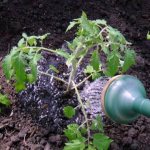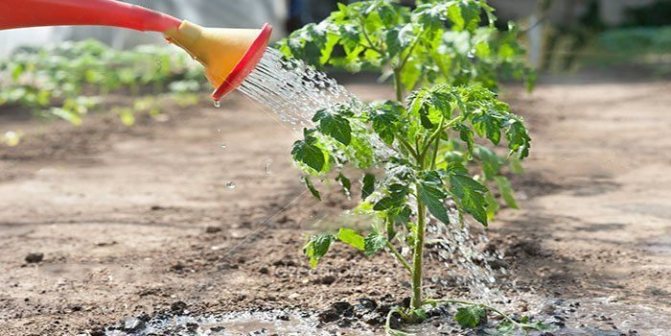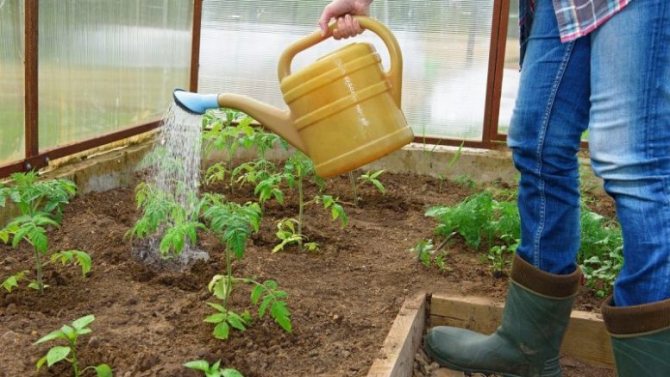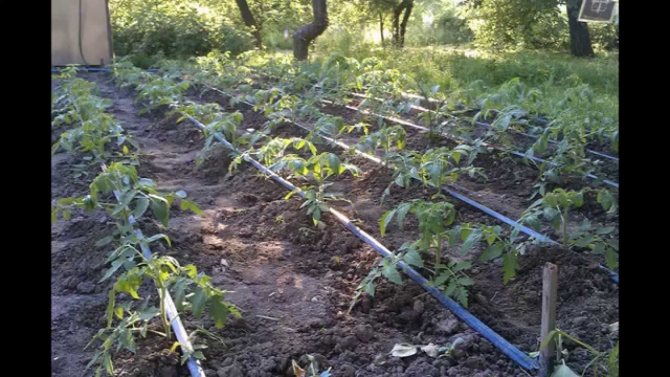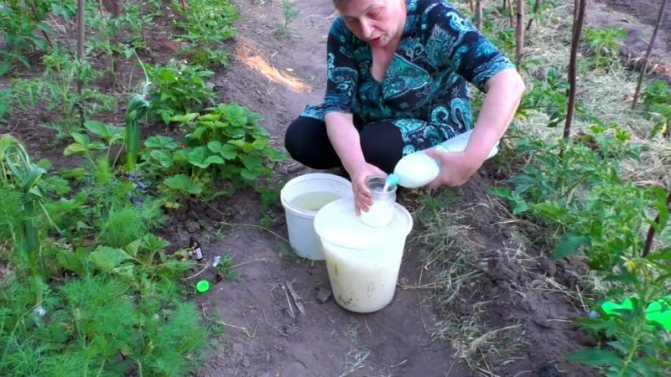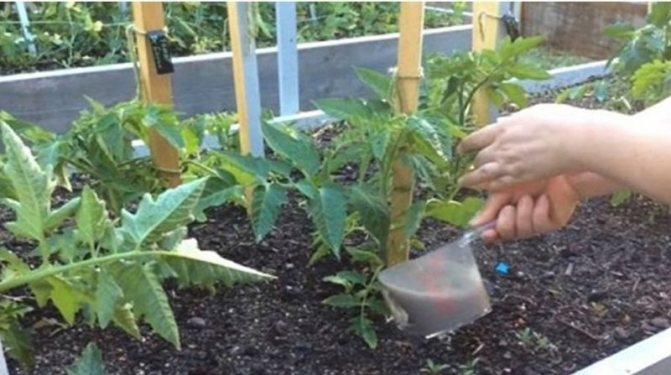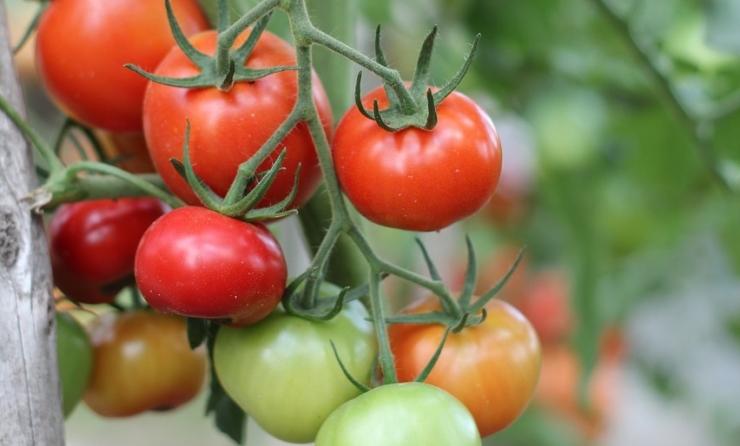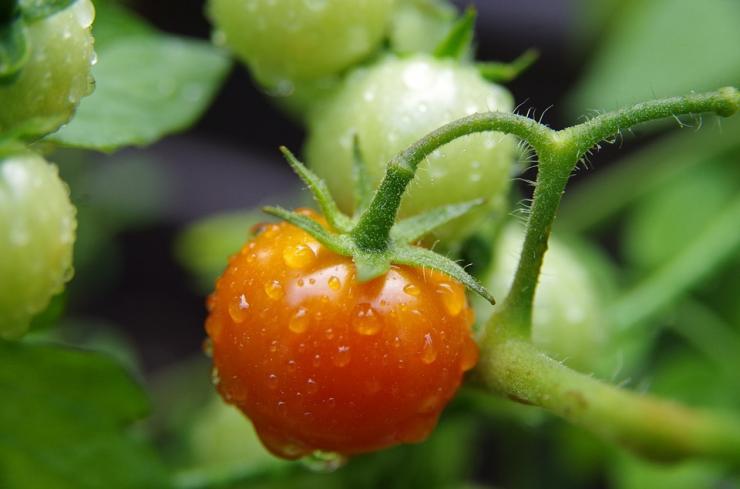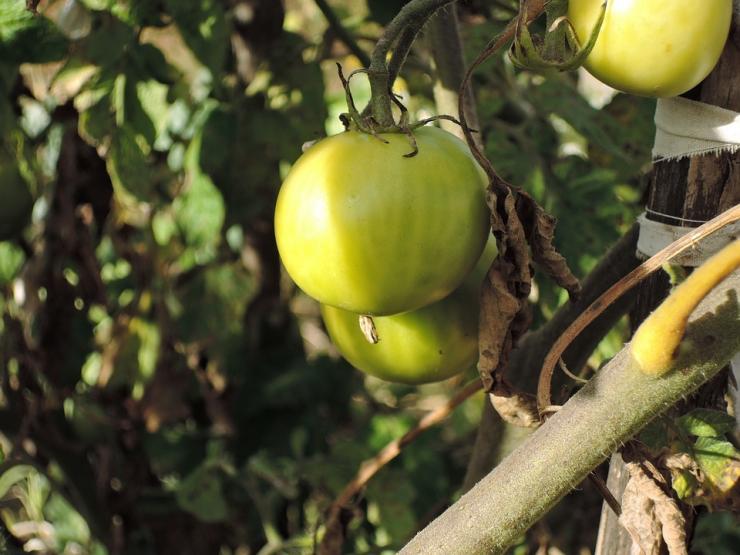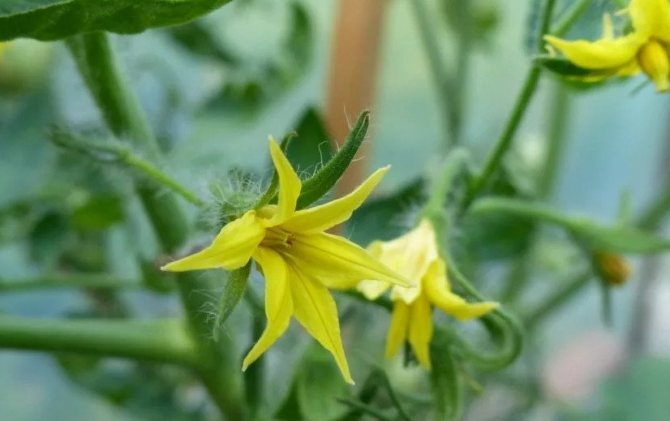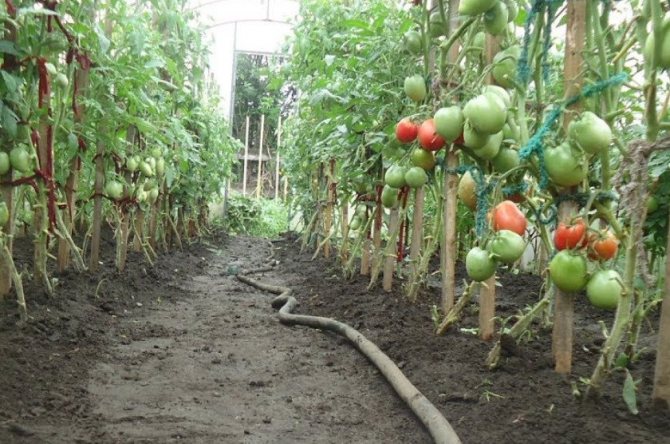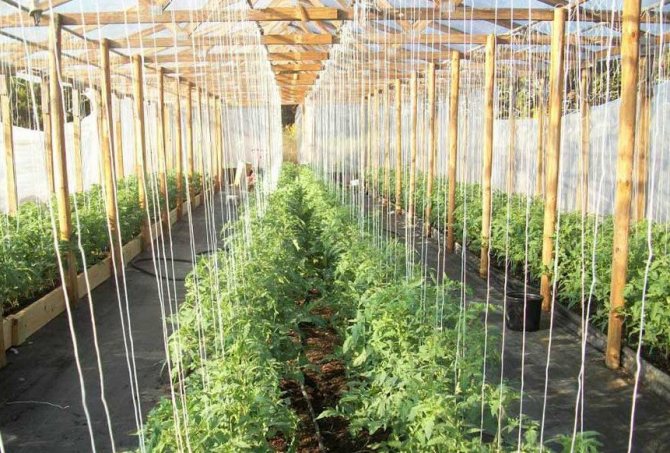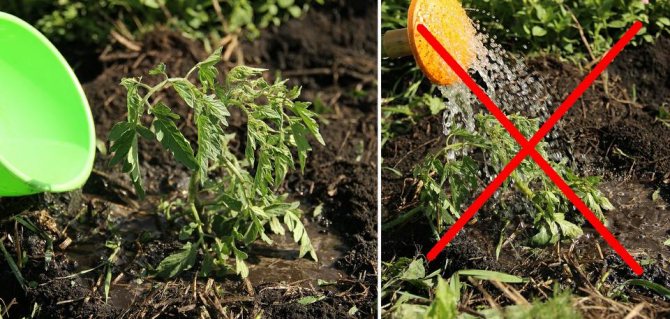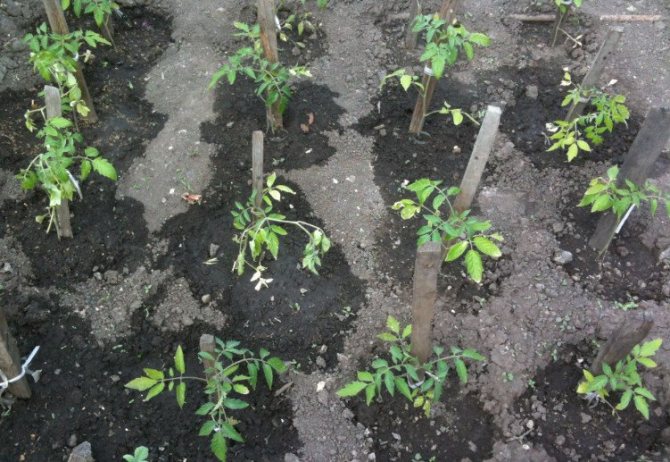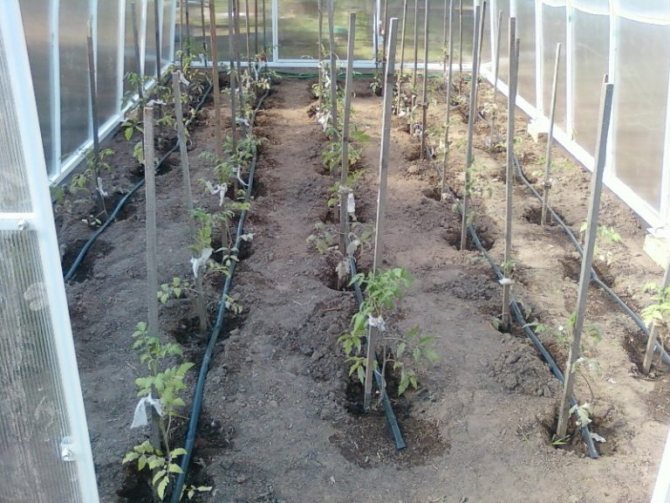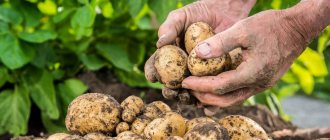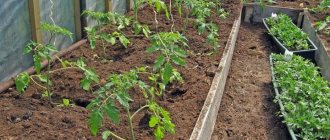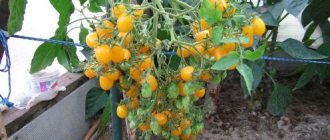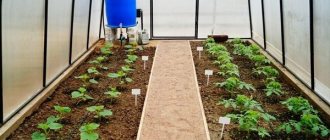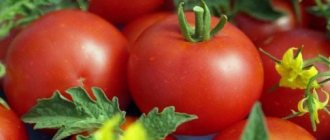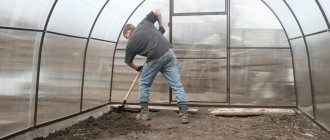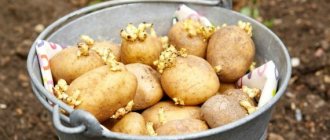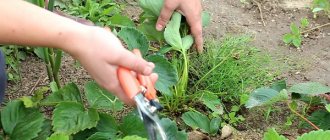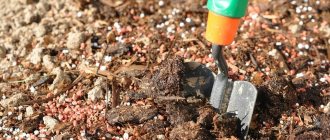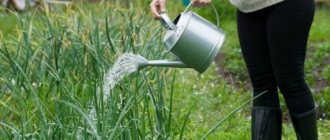Growing a tomato requires special care: it is necessary to follow the planting rules, water it correctly and feed the plants on time throughout the growing season. For them, both excessive watering and a lack of moisture in the soil are harmful.
Watering tomatoes in the greenhouse in the morning and in the evening is not recommended. In the morning hours, the water is not warmed up enough, and in the evening after watering, moisture condensation on the walls of the greenhouse increases - this has a detrimental effect on vegetables. Daytime watering allows moisture to be completely absorbed into the ground, and excess moisture to evaporate before nightfall. In addition, during the day, you can control the ventilation process in case of high air humidity.
Why follow the rules for watering tomatoes in a greenhouse
Tomato plants react equally badly to both lack and excess of moisture.
With insufficient watering:
- poorly absorbed nutrients;
- the root system develops poorly and the growth of the vegetative mass slows down;
- fruits do not gain weight well and are capable of shedding.
The lack of moisture at the initial stage of the plant is signaled by rolling the leaves with a boat.
With excessive watering:
- the risk of developing diseases increases;
- air exchange processes and mineral nutrition deteriorate;
- the fruits crack and rot.
How to properly water tomatoes in a greenhouse?
How often to water
Tomatoes prefer watering not frequent, but abundant, wetting the soil at the entire depth of the root system.
Attention! Based on climatic conditions, watering of plants should be carried out no more than 1-2 times a week.
Frequent, minor watering moistens only the upper part of the soil, not saturating the roots with moisture, but creating dampness in the greenhouse. Excessive moisture contributes to a decrease in soil temperature and creates favorable conditions for the development of diseases.
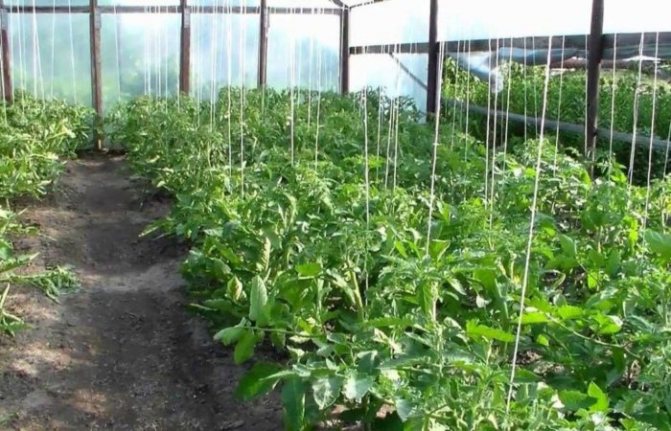
What time of day
The best time to water in sunny weather is in the evening, 2-3 hours before sunset. This time will allow the water to be absorbed into the soil and the plants to dry out. During the night, moisture will be evenly distributed in the soil and will begin to be absorbed by the root system, the air humidity will return to normal.
On cloudy days, watering can be done at any time, but you need to pay attention to the air temperature. If it is low in the morning, it is best to wait for the temperature to rise during the day.
how many
Water consumption directly depends on the following factors:
- the age of the plants;
- growth phases;
- type of bush;
- environmental conditions.
For one plant, it ranges from 0.5 liters after planting seedlings, to 5-10 liters during the growth of the vegetative mass and mass fruit setting.
Watering frequency
The frequency is directly related to solar activity. The more sunny days, the more often watering is required. But you need to make it abundant, so that the frequency is no more than 2 times a week.
Watering in the heat
In hot, sunny weather, the soil dries out faster, and the frequency increases to 2 times a week. When the soil is moist, the plants are cooled by the rapid evaporation of moisture from the leaves. This allows them to easily tolerate heat over 30 ° C. Watering under the scorching sun should not be done.The dew drops formed on the leaves, like lenses, refract the sun's rays, and the tissues get burns, and the phytophthora spores are fertile ground for germination.
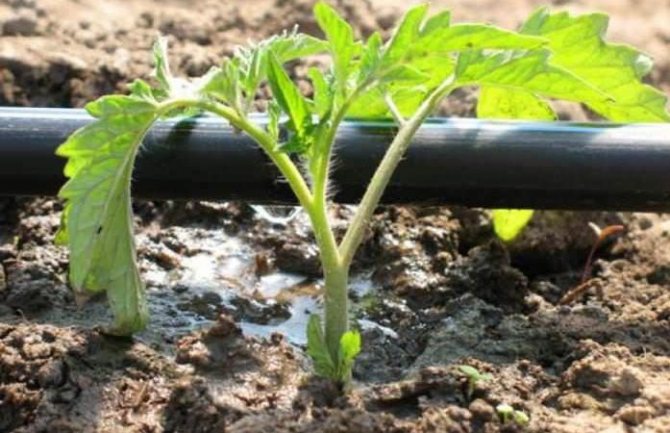

In rainy weather
Creates high humidity of the air, therefore, especially at this time, the soil should not be waterlogged. During this period, it is necessary to more often loosen the soil and ventilate the greenhouse.
When to stop watering tomatoes in the greenhouse?
If the formation of the main number of fruits has ended or a decision has been made to pinch the growing point in order to direct the forces of the plant to ripening, watering the plants can be stopped. For early varieties, this period begins in August. Late varieties continue to develop intensively and need full watering.
If the weather conditions in autumn worsen, the air temperature drops and the daylight hours are shorter, the water demand of plants decreases, and irrigation is reduced. During the ripening period of the last fruits, watering is completely stopped.
How to water tomatoes correctly, how much water is required for this - the author of the video tells.
Basic description of tomatoes
Tomatoes are an annual vegetable crop from the nightshade family; they can be grown in a greenhouse or greenhouse, in the beds in the garden. Planting and growing these vegetables hydroponically has also become very popular lately.
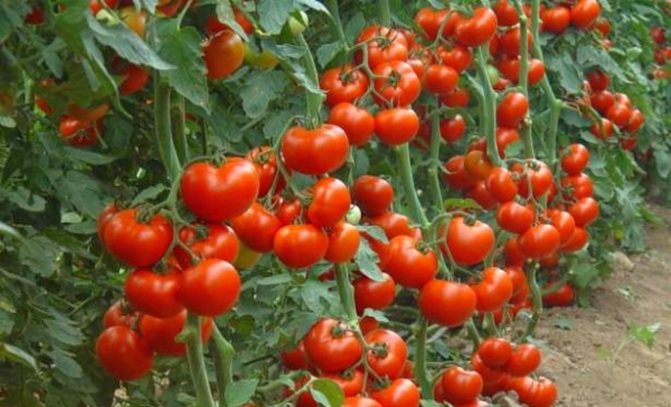

Tomatoes
It is important to properly prepare the area where the grower will plant the tomatoes. This vegetable crop requires a fertile and loose soil, which has been pre-applied with fertilizers containing basic mineral elements (including phosphorus, potassium and nitrogen). The soil should not be acidic, the best will be neutral or slightly alkaline. If on the site there is only acidic soil, in the fall for digging, in addition to organic fertilizers, it is necessary to add lime or dolomite flour.
In the open field for the normal cultivation of this culture, the air temperature should be at least 21-23⸰С, and in greenhouse conditions - 25-30⸰С.
Important! Since tomatoes are heat-loving plants, at low temperatures they can slow down development, the fruits will not ripen well. In addition, in such conditions, in rainy weather, plants can be exposed to fungal diseases.
When growing them, you should follow the rules of crop rotation. The best precursors for tomatoes: onions, beets, carrots, cucumbers, turnips, greens, cauliflower and various green manures.
You can not plant this vegetable after potatoes, peas, physalis, eggplant, pepper and zucchini. Also, you should not grow tomatoes in the same place every season.
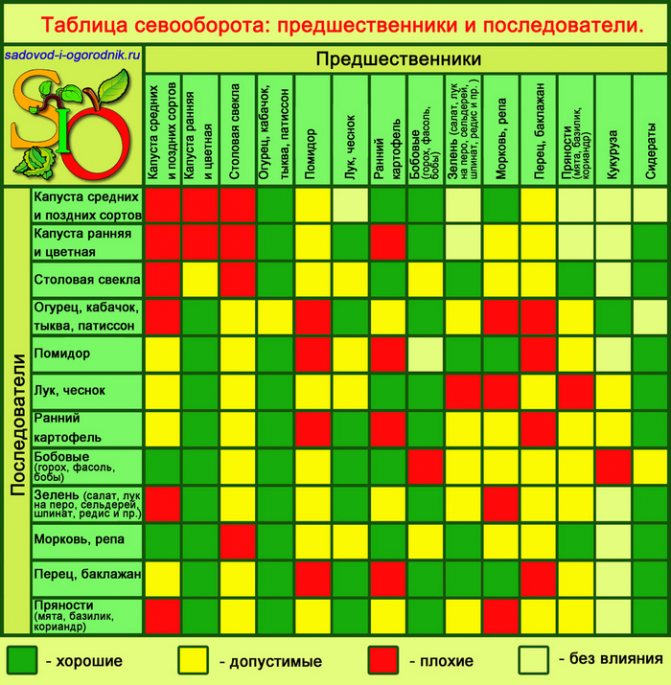

Crop rotation table
Melons (watermelons, melons), corn, radish, herbs, garlic, and basil will be good neighbors for this vegetable crop. And if you plant marigolds, nasturtium and calendula in the aisles, their aroma will scare away pests from tomato bushes.
What water to use
- Warm water.
It is impossible to allow sudden changes in temperature, so it is better to water it with warm water. In hot weather, it is heated by the sun and can reach 23-25 ° C, that is, be close to the ambient temperature.
- Cold water.
In cloudy weather, water heated to 18-22 ° C is used. Lower temperature water slows down metabolic processes and the development of diseases.
Advice! Use settled water or rainwater, which has a lower hardness.
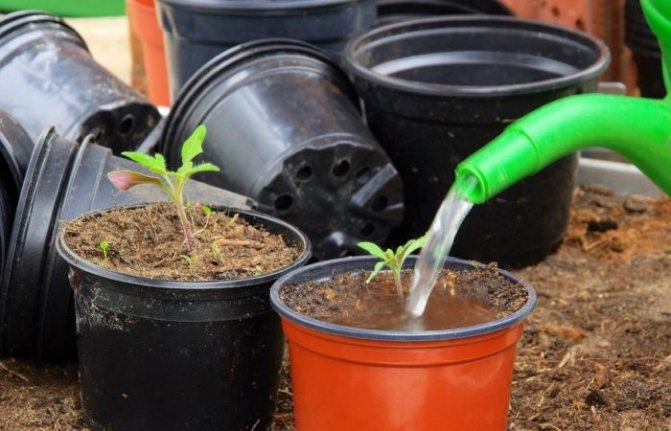

Irrigation technology
- Manual watering.
They are used in small greenhouses and for growing seedlings. Small seedlings can even be watered with a pipette or syringe, so as not to moisten the plant and not bend it to the ground. The grown seedlings are watered from a ladle or mug, but also under the root. Adult plants, it is difficult to water in this way.
The use of a hose is very common and greatly facilitates the work. This method also has disadvantages:
- it is difficult to avoid water ingress on plants;
- under the pressure of water, the soil at the roots is eroded;
- it is difficult to determine the water consumption for a plant.
If you use hose watering, then it is better to do it in the grooves prepared in advance. For double-row plantings, three recesses are made, decorated with the sides of the earth (one between the rows, the others along the edges). The hose is placed in the groove and slowly filled with water, which gradually absorbs and moisturizes the soil.
- Drip irrigation.
This is a very modern and effective way to moisten the soil, although it is more expensive. Water is supplied through hoses, with holes made in them, directly to each plant. At the same time, the water supply is strictly dosed, watering is turned on at the right time, water falls on the ground with drops with a certain rhythm. Plants remain dry, the structure of the soil is not disturbed and is moistened evenly.
- Through plastic bottles.
Many gardeners use a cheap and easy way to deliver water directly to the roots using plastic bottles. They are buried one by one at each bush, in the root zone, after cutting off the bottom. Holes are drilled for gradual penetration of moisture. Water is poured into a bottle from a hose, watering can or mug and it moistens the soil at the roots and to a sufficient depth.
- Auto.
Modern equipment makes it possible not only to dose the amount of supplied water, but also to control the temperature, moisture content of the soil and air. Depending on the received parameters, the system is automatically turned on. Well-tuned automatic systems minimize human involvement.
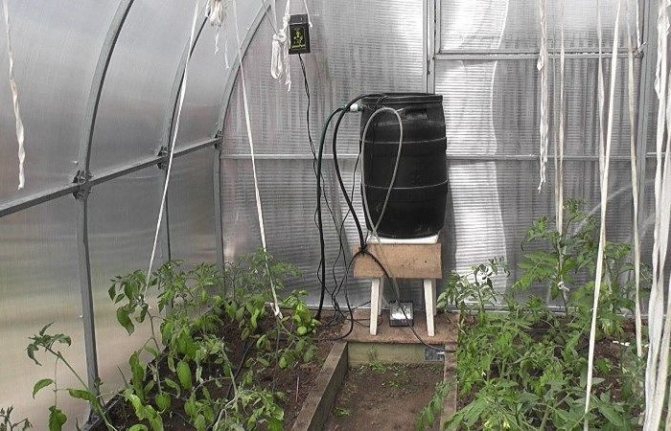

Automatic inclusion of irrigation is used both for the drip method and for special small-drop nozzles, to which water is supplied through hoses. They are laid on the ground or extremely low to it.
Advice! In stationary polycarbonate greenhouses, it is more advisable to use drip irrigation.
Automatic irrigation systems
Recently, along with glass and film greenhouses, polycarbonate greenhouses are beginning to gain great popularity. The main advantages of such a greenhouse are good thermal insulation, the polycarbonate walls are quite strong in comparison with the film and they transmit and scatter daylight well. If finances allow, then you can buy a ready-made polycarbonate greenhouse, it is very easy to install.
Automatic irrigation systems, as a rule, are rarely used at home; they are more intended for industrial greenhouses of huge sizes. But if you also have a very large polycarbonate table, you can install such a system for yourself. In this article, we will not describe all the subtleties of its setting, the most important thing is that it conforms to the basic rules for watering tomatoes in a greenhouse.
Greenhouse watering and tomato growth stages
At different stages of growing a tomato plant, there are different requirements for watering and moisture.
When planting seeds
Tomato seeds are sown in well-moistened soil, retain moisture until germination using film, glass and other transparent materials, which cover the growing container. Before germination, the crops are not watered, and after their mass appearance, they begin to water.
Do not allow the topsoil to dry out, since the root system of young seedlings is located here. Watering during this period is done often, almost daily.
Before picking (1-2 days), the seedlings are thoroughly watered so that the plants are saturated with moisture. Seedlings cut into wet soil begin to water for 4-5 days at intervals of once every 6-7 days.To improve the development of the root system, trays with water are used, in which pots with drainage holes are placed, through which water flows to the roots from below.
After planting seedlings
Before planting seedlings in a permanent place, they are watered abundantly per day so that the lump of soil around the roots is moist, but does not fall apart. Immediately after planting, do not water abundantly and do not use water for the next 5-7 days (unless the soil dries up in high heat). During the engraftment period, the seedlings will consume a small amount of moisture.
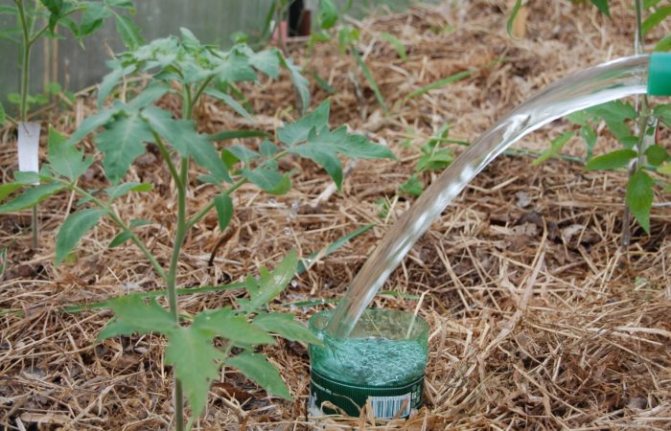

During flowering
The surviving seedlings will begin to develop intensively and a sufficient amount of moisture will be required to form a vegetative mass, set and pour fruits. Watering during this period should be infrequent, but abundant.
During fruiting
Watering of early-ripening determinant fruits is practically stopped during the ripening period. Thus, they contribute to the amicable maturation of the formed ovaries. Varieties that mature gradually and continue to grow and plant new fruits continue to water as usual. To accelerate ripening, reduce watering and pinch the top of the plant.
Excessive moisture and lack of moisture
Of course, any plant, if cared for incorrectly, will signal this to its owner with changes in appearance. So, the first sign of a lack of moisture is the twisting of the leaves along the central vein.
Lack of moisture or excessively moist soil can provoke diseases such as late blight, Alternaria, Fusarium.
In the future, if you do not take action, such leaves will dry out and fall off.
It is important to understand that with a lack of moisture, plants will not tolerate an air temperature of +30 ° C and higher. They will overheat.
When the first signs of a lack of moisture appear, do not immediately pour the plants abundantly. Establishing the correct watering regime should occur gradually. Remember that the main thing is not so much the frequency as the regularity and volumes of the applied liquid.
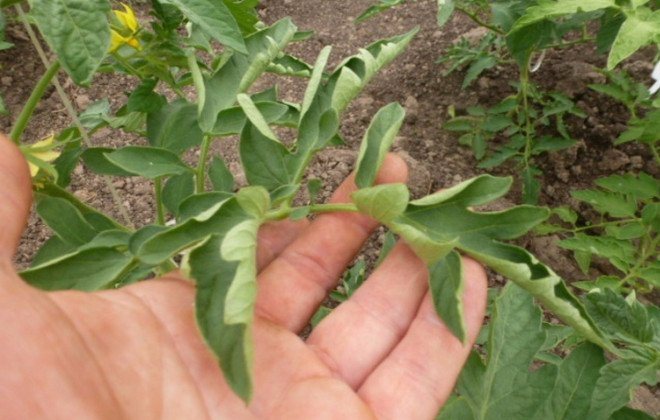

If the leaves are drying out, then simultaneously with the restoration of proper moisture, it is also necessary to take care of making additional feeding.
An excess of moisture will first of all affect the roots and lower parts of the stems, they will rot. If you notice this trend, then the amount and frequency of hydration will need to be reduced.
Too much moisture during the fruiting period will lead to cracked fruits and a decrease in their taste.
Did you know? Until today, there is no consensus about what a tomato is - a vegetable, berry or fruit. Botanists classify it as a berry, technological taxonomy as a vegetable crop. In the European Union, it is customary to classify it as a fruit.
But the wrong choice of water temperature will affect the plant by the development of a serious disease called late blight, which in a week can leave the owner of the greenhouse without a crop.
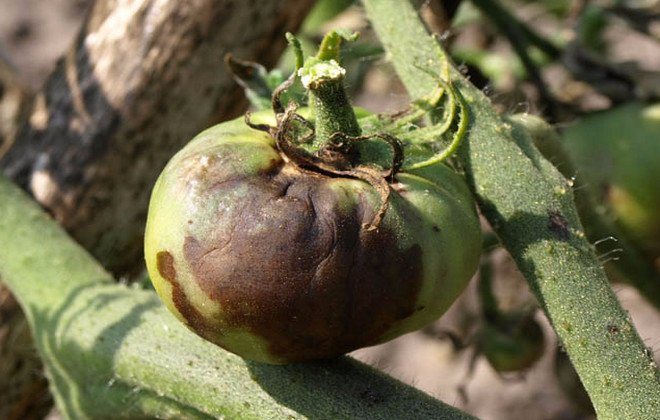

Useful Tips
The following recommendations will be useful:
- Remove containers of water from the greenhouse or cover them so that the moisture level does not rise when the water evaporates.
- Do not let the soil dry out. Subsequent heavy watering will lead to cracking of the stem and fruit.
- If moisture does not penetrate well into the soil due to its dense structure, use preliminary loosening or piercing the soil with a pitchfork. If after watering it is planned to carry out top dressing with aqueous solutions of fertilizers, take into account the rate of water consumption taking them into account in order to prevent an excess of moisture.
- If, nevertheless, an excess of moisture has formed in the greenhouse, actively ventilate it and loosen the soil.
In order for water to become an assistant in the production of a rich harvest, it is necessary to strictly observe the rules and regulations for watering tomatoes in a greenhouse and be able to navigate in the frequency of its implementation.

